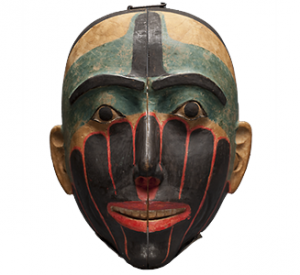As our work lives move into international waters, 5 strategies assure smooth sailing
Just the other day, I was in a meeting planning an important team kickoff – and one of the stickiest questions had us studying international maps and time zones.
The challenge: When could we schedule meetings and conference calls so that all team members – based in China, Switzerland, Western Europe, and North and South America – could participate without having to wake up in the middle of the night?
A few weeks earlier, three Wunderlin Company team members worked with a client to design and facilitate a meeting for a group of business leaders from the U.S. and developing countries in Africa and Asia.
A couple months of before that, our team led a facilitator-training workshop in Eastern Europe.
So it goes these days. Our work is increasingly international – and we are not alone.
Odds are good in many organizations that you may find yourself doing more business abroad, attending international conferences, learning another culture in response to a changing work force, or interacting regularly with multi-national teams.
So it is increasingly critical to develop what some people call your International IQ.
In my first job at GE back in the 1980s, I was lucky to spend significant time in Japan and Korea and develop strong bonds with Asian counterparts. But at that time, working halfway across the globe, I was still a novelty among my friends and colleagues.
No more. Today, international work is the way of the world and The Wunderlin Company’s team members have touched base in every continent.
“It helps me stay fresh and get new perspective,” says Judy Futch, a team member whose experiences have included classes for international executives at the University of Hawaii and Harvard Business School.
Most of my colleagues agree. So here is a road map – five key strategies – based on our team’s international work experiences that may add to your resources on this topic.
 1. Do your homework
1. Do your homework
First and most important, educate yourself about the places you will be working – and the nationalities of the people you will work with.
You will find yourself reading the The Wall Street Journal and The New York Times in a different way when you know you are headed for Denmark or Australia in the next few months.
Both publications have expanded their international coverage. WSJ publishes Asia and Europe editions – and you can click on their online edition under the words “The Wall Street Journal” to survey the different front pages. The International New York Times last year was born with the consolidation of Times international coverage with the old International Herald Tribune.
The British Financial Times offers five international editions focused on the U.S., the U.K., Europe, Asia and the Middle East.
The Economist, offers a crisply written weekly briefing on wide-ranging global news and issues. Its website is lively. You can read it online or take advantage of regular subscription promotions.
Two other news resources recommended by a friend with U.S. Foreign Service connections: the sites Global Post and Foreign Policy.
Some other online resources: The U.S. State Department, which offers information geared to both travelers and businesspeople, including information on specific countries; CIA World Factbook (copy into your browser https://www.cia.gov/library/publications/the-world-factbook/); the World Bank; the International Monetary Fund and the Council on Foreign Relations.
 2. Understand, accept and anticipate cultural differences.
2. Understand, accept and anticipate cultural differences.
TWC team member Carol Schifman – whose GE WorkOut and change acceleration work have taken her from South America to Europe, from Africa to Asia – emphasizes the importance of sensitivity to cultural and language differences.
Educating yourself is critical – “knowing that you will probably make a faux pas anyway…but that people in other countries are usually very forgiving.”
“Keep your antennae out for cultural differences” is how Judy Futch puts it. At the same time, she says, avoid blanket assumptions about nationalities or ethnic groups. . . statements like “All —- do this” or “No —- would ever do that.”
She has encountered gender issues, teaching executives whose business experience has never included working with women or even shaking a woman’s hand. Among the ways she eases comfort is attention to conservative dress – say, slacks and a jacket and modest closed-toe shoes.
Conflict resolution is an area that particularly requires multi-cultural understanding.
U.S. business people may be accustomed to a culture of direct – and sometimes abrasive – discussion to decide an issue. An Asian counterpart may work in a culture that prizes harmony over speedy resolution, avoids confrontation and embraces more indirect ways of resolving differences, including working around them using intermediaries.
Rewards and status issues also vary, says Shelly Tomaszewski, a TWC team member who worked in Brussels as an HR manager in Europe and has consulted in Europe, Asia and South America.
“What may work to motivate employees in the U.S. may backfire in a different culture,” she said.
One example: the company wanted to reward and retain a key leader. He was given a substantial raise – a 10 percent salary increase.
Puzzlingly, he did not seem pleased. “I later learned that his country’s tax system was so onerous that the increase turned out to be a burden,” said Shelly. “What most Belgian employees wanted was the status of a bigger office or a company-provided car or phone that would not incur taxes.”
Personal style also needs to reflect understanding of the culture where you operate, she said.
“While working with an American client posted in Japan, I learned from his manager and peers that the client dressed and conducted himself in a ‘casual’ fashion — typical in America but frowned upon in that culture. However, since saving face was also very important in that culture as well, no one had told him to spruce up his wardrobe and put on a suit.”
She did.
“While working with a client from Australia,” she says, “I learned that his ‘cowboy/renegade style’ which was very effective in his country, rubbed people the wrong way in the U.S. and ultimately stalled his career.” She could help there, too.
 3. Communicate clearly
3. Communicate clearly
The challenges depend on locale and your audience – but almost always involve a more thoughtful and nuanced way of listening and speaking.
For Judy Futch, as she teaches groups with varied English skill levels, her rule has been: “Don’t make assumptions.” So she regularly asks for honest feedback: “Am I speaking too fast? Too slow? Am I doing anything distracting?”
All participants in a facilitator-training workshop I taught in Poland recently spoke English – but it was still critical to think about language carefully in order to be clear and inclusive. I find myself trying very hard to strip out similes and phrases that don’t translate to other cultures.
For example, it was relevant to provide scenarios that described size in both feet and metric measures and temperatures in both Celsius and Fahrenheit.
Metaphors also turn out to be culture-specific. A British member of the team used the term “horses for courses” in one of his responses – and drew a complete blank from the rest of us. The translation turns out to be based on horses performing best on a certain racecourse – also applicable to a person being suited for one particular job.
 4. Pack your sense of humor – and humility
4. Pack your sense of humor – and humility
No matter how well you prepare, the consensus is clear: You will find yourself at a loss or in a jam.
Learn from it, my colleagues say.
On my first visit to Japan, when I asked about the location of the washroom, I was directed to the men’s room – had to learn to be specific in asking for a ladies washroom so that I didn’t surprise my male colleagues again!
Liz Cornish, a consultant whose work includes two years in Kenya and time in India, Canada and New Zealand, likes to share one story about work in the Philippines: “I had a large group and heard they loved sweets. So during a lunch break, I ran out to the markets and bought multiple packages of chocolate, distributing them on tables throughout the room for our afternoon session.
“Not a single piece was consumed so I was a little hurt. At the end of the day, my partner and I each grabbed pieces, popped them into our mouths and simultaneously spit them out. It was bitter baking chocolate.
“The people in the audience – and the Philippine culture in general – were so polite, we would have never learned our mistake till we tried it ourselves.”
 5. Make the most of each international work experience to expand your knowledge and horizons
5. Make the most of each international work experience to expand your knowledge and horizons
“Working in other countries and cultures is an opportunity for 24/7 learning,” says Carol Schifman. She mentions participants telling her about cobras hanging from the trees at the training site in Malaysia, holding workshops in an Ethiopian school classroom and coping with unpredictable electric lighting during western Ukraine work groups.
“All great experiences where people were serious about their work despite the odds.
Liz Cornish likes to ask groups in other countries, “What strikes you about working with Americans? What makes them different?”
“The answers,” she said, “can tell you a lot about their culture. For example, in Africa, one group said, ‘They always tell the truth.’”
Asking the same question, I’ve been told Americans seem relentlessly cheerful and enthusiastic – and that all that “cheerleading” can be exhausting in cultures where that is not the norm.
Judy Futch’s advice: “Take 24 hours after the job is done to be a good tourist…and enrich your experiences.”
Working abroad “is becoming more the norm if you want to move forward with your career,” she said.
So embrace its opportunities. “It is energizing…challenging and helps you stay fresh and get a new perspective.”
Have you had international work experiences you would like to share?
Need more advice about resources mentioned here?
Are there helpful sources of information you recommend?
Drop me a line – I’d welcome your insights and questions.



Terrific article with great insights. Sharing international experiences leads to the best conversations.
One of my favorite websites is newsmap.jp. (“Newsmap is an application that visually reflects the constantly changing landscape of the Google News news aggregator.”) Explore international news sources on a variety of topics. Great for learning about the world and learning foreign languages! If you want to know more, there is a good About link at the bottom of the page.
Beth is a hard working career woman whose last relationship says that she puts her work above him so he left her. When he tells her he found another career woman and is willing to stick it out with her and is engaged to her, Beth feels that there is no one for her. And when she goes to Rome to attend her sister’s impromptu wedding and after meeting the best man, Nick, she’s attracted to him but after seeing him with another woman, she gets drunk and goes into the famed Fountain of Love and takes some coins thrown by people looking for love. When she goes back to New York four men start coming onto her. And Nick keeps calling her asking her out. She later learns that what she did–is a no no. It seems legend says that if you take a coin out of the fountain the person who threw it will fall in love with who took the coin. So she has to find a way to break the curse. And she wonders if Nick, whom she likes, is with her cause he wants to or if he is under the spell.